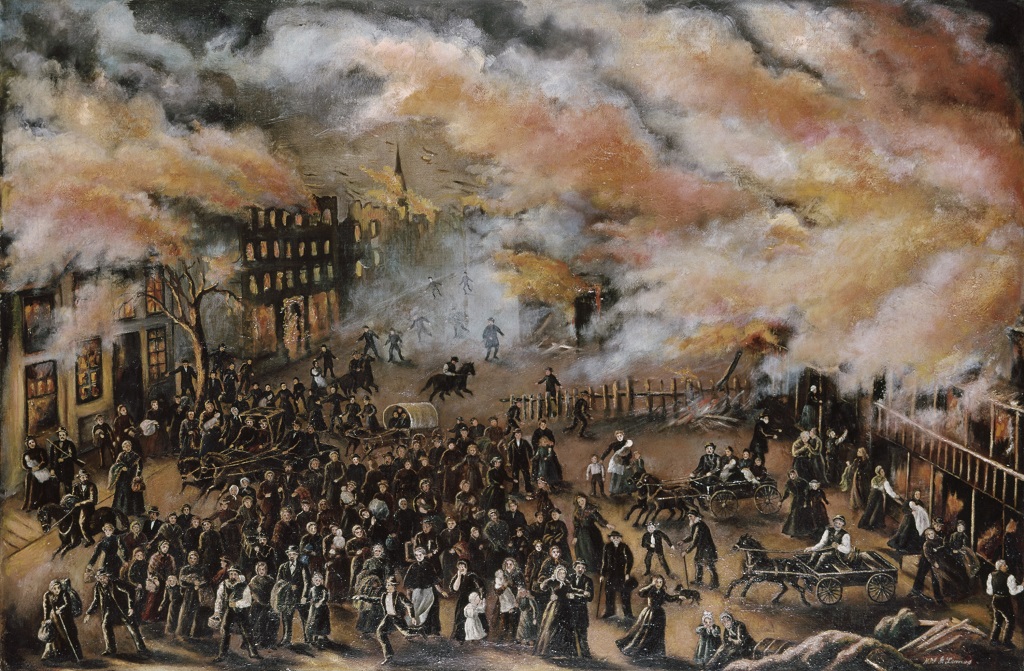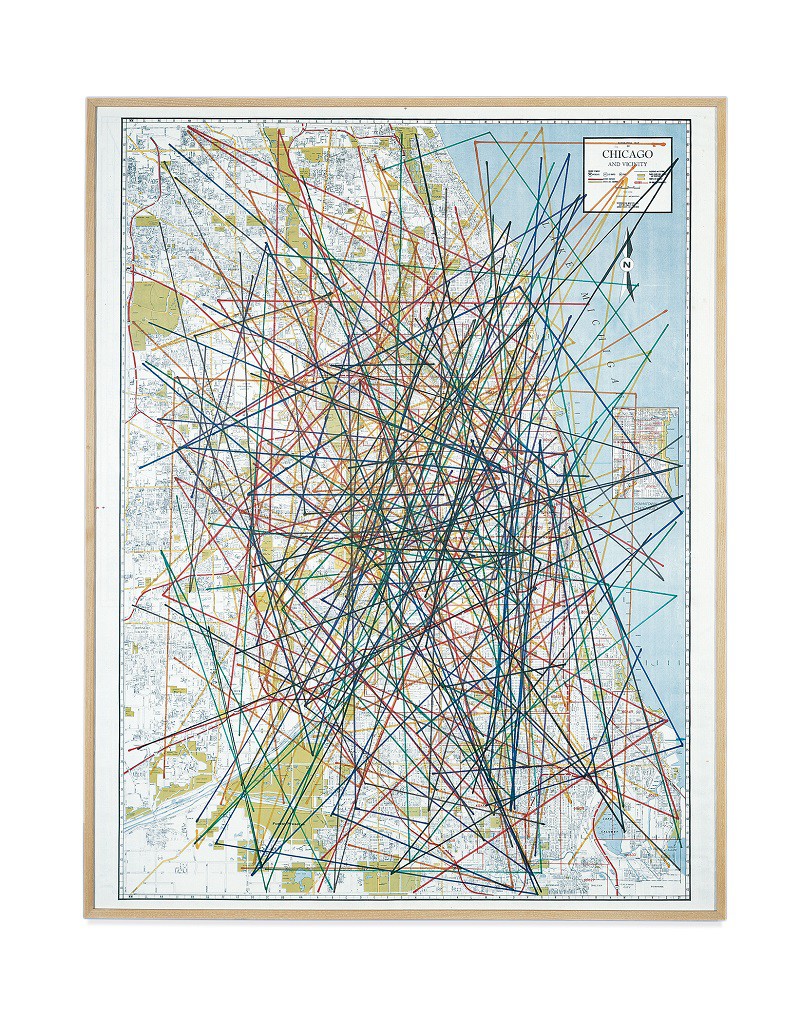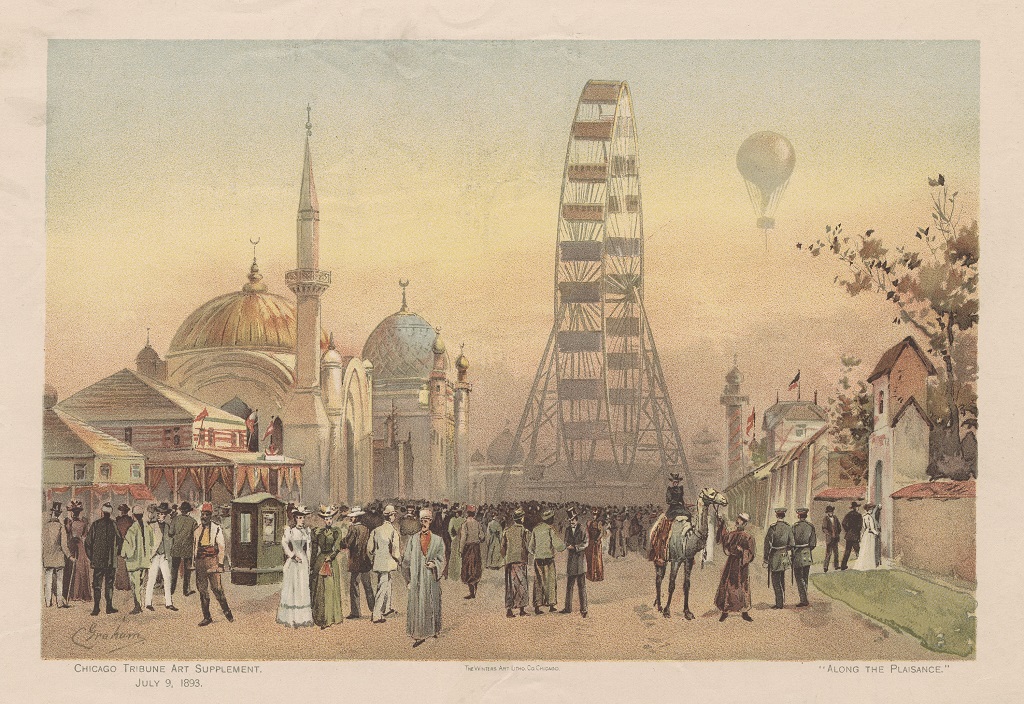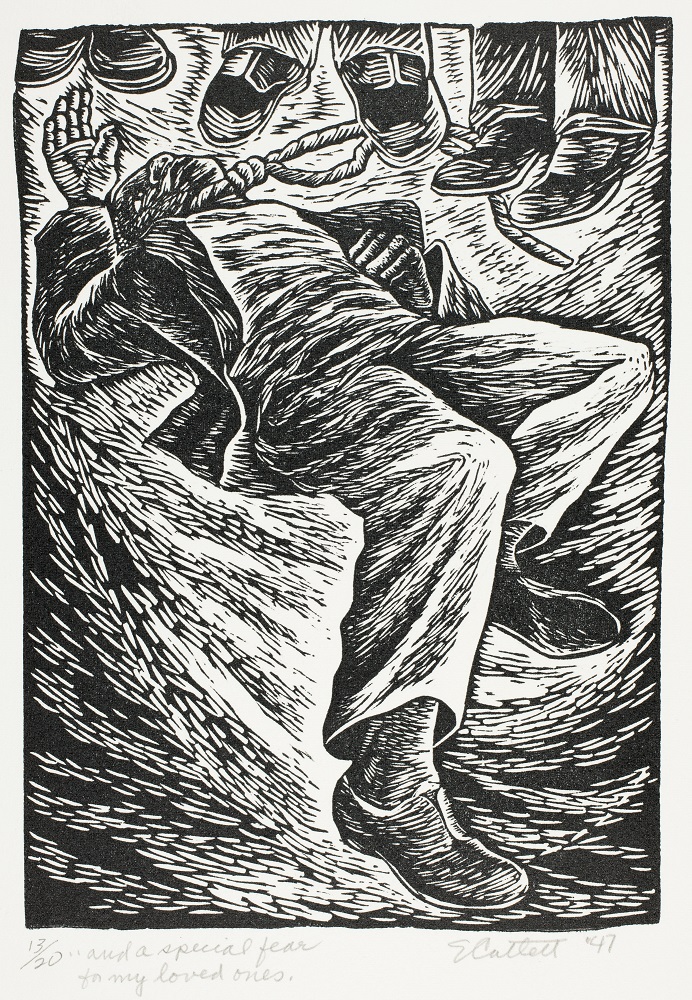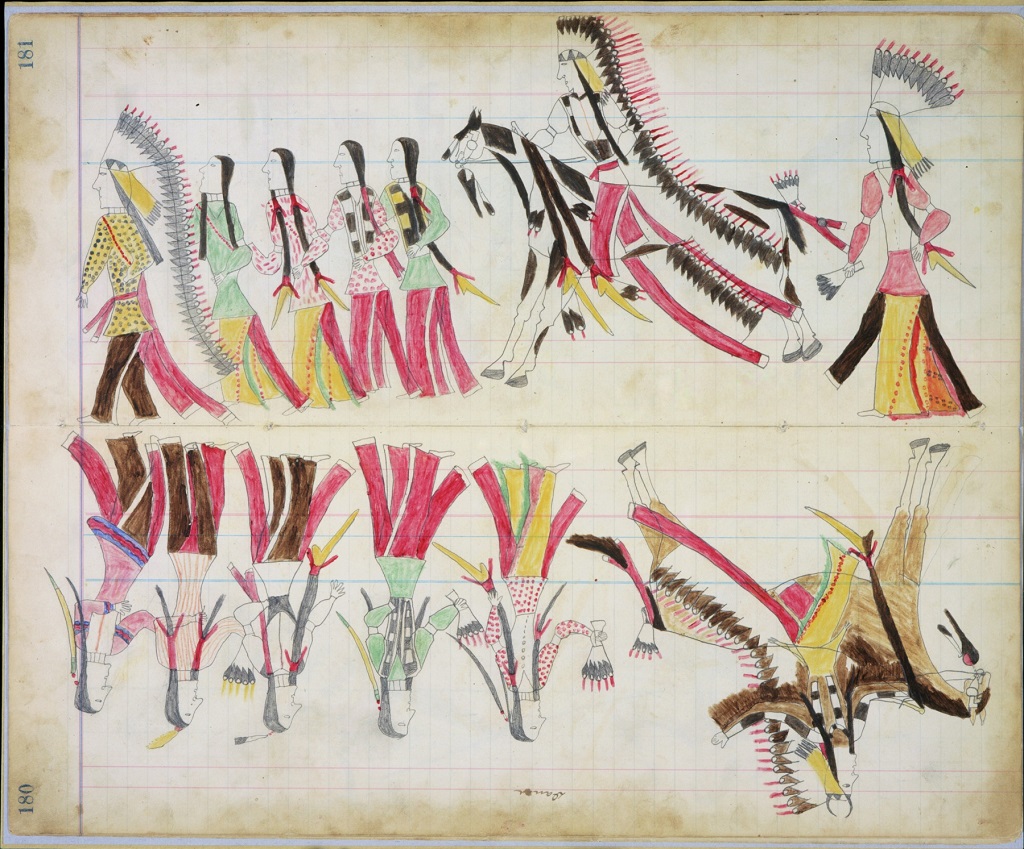Authors:
Megan Clark, Chicago History Museum
Demetra Disotaur, District 65
Shannon Greve, Frank Lloyd Wright Trust
Jan Kieckhefer, Frank Lloyd Wright Trust
Colleen McGinley, Dewey Academy of Fine Arts
Heidi Moisan, Chicago History Museum
Sue Stone, Chicago Academy
Summary:
In this lesson students will examine four different sources to learn about the Great Chicago Fire and how it transformed Chicago. Students will begin by discussing the concept of transformation. They will share what they already know about the Great Chicago Fire of 1871 and record questions that they have about the fire. They will closely analyze Memories of the Chicago Fire in 1871, a painting by Julia Lemos. They will read an informational text about this image as well as an additional article about the fire. They will also read a primary source letter written by a boy who survived the fire. Students will look for information in all four sources that helps answer the questions they generated, recording that information on a graphic organizer. Then they will write letters from the point of view of a survivor of the fire, and will conclude with a discussion about how the Great Chicago Fire transformed Chicago.
Lesson Overview
Grade Levels: 3–4
Time Needed: 3–4 class periods, 30–40 minutes each
Background Needed
No specific background information is required before teaching this introductory lesson.
Essential Questions
- How can a disaster transform a community?
- How does an artist or writer’s point of view influence the stories of people, places and time?
Enduring Understandings
- Those who share their memories of a disaster can give other people a deeper understanding of the events.
- The Great Chicago Fire of 1871 transformed the city of Chicago both in terms of the destruction it caused and the rebuilding that happened afterward.
Objectives
- Students will read closely to determine what a text says explicitly and to make logical inferences from it.
- Students will integrate and evaluate content presented in diverse media and formats including visually as well as in words.
- Students will write narratives to describe experiences and events using effective technique, descriptive details, and clear event sequences.
Key Vocabulary
- destruction
- disaster
- façade
- housing
- infrastructure
- point of view
- possessions
- primary source
- property
- shelter
- survivor
Standards Connections
Common Core State Standards
Anchor Standards in Reading: http://www.corestandards.org/ELA-Literacy/CCRA/R/
- CCSS-ELA Reading Anchor Standard 1: CCSS.ELA-LITERACY.CCRA.R.1
- CCSS-ELA Reading Anchor Standard 7: ELA-LITERACY.CCRA.R.7
Anchor Standards in Writing: http://www.corestandards.org/ELA-Literacy/CCRA/W/
- CCSS-ELA Writing Anchor Standard 3: CCSS.ELA-LITERACY.CCRA.W.3
Materials
In the Classroom
- a computer with Internet access
- an interactive whiteboard or another classroom projector
Works of Art
- Julia Lemos, Memories of the Chicago Fire in 1871
Other Resources
- Graphic Organizer: The Great Chicago Fire
- Art Study: Memories of the Chicago Fire in 1871
- “The Great Chicago Fire: Chicago Is Burning!” Chicago History Museum, http://www.chicagohistory.org/mychicago/pdf/lesson3.pdf. Pages 16-18 of the lesson have a nonfiction text and a list of facts about the fire.
- “Justin [Butterfield],” The Great Chicago Fire and the Web of Memory, accessed September 15, 2014, http://www.greatchicagofire.org/anthology-of-fire-narratives/justin-butterfield. This primary source is a brief letter from a child who witnessed the Great Chicago Fire. Justin’s drawing that he made with the letter is available online here: http://www.greatchicagofire.org/eyewitnesses/visual-record
Lesson Steps
- Discuss the concept of transformation: Write the word “transformation” on the board. Recap previous discussions about the meaning of this word or guide students to define it and give examples of transformations, consulting reference sources if necessary.
- Activate prior knowledge and generate questions: Ask students to share what they already know about the Great Chicago Fire of 1871. Then invite them to generate a list of questions that they have about the fire. Record their questions on the board. Sample questions include:
- What caused the Great Chicago Fire?
- How did people react as the city was burning? Where did they go?
- What was the impact on the city? How did the city change?
- What are some similarities and differences in how survivors described the events?
Distribute copies of the Graphic Organizer: The Great Chicago Fire. Have students choose three questions from the class list and record them in the first column of the graphic organizer. Explain that they will be examining various sources of information about the Chicago Fire, and will look for information in each source that helps answer their questions.
- Introduce Memories of the Chicago Fire in 1871: Give students copies of the artwork or project the image on a screen. Ask them to look at the artwork and discuss how the piece shows a transformation.
- Guide a close looking of Memories of the Chicago Fire in 1871 Use strategic questioning to help students look closely at this work of art and begin to make their own interpretations about the meaning of the artwork and the artist’s motivations in creating the artwork. Guide the discussion with questions like the following:
- The name of this painting is Memories of the Chicago Fire in 1871. What does the title tell us about the artist and the artwork?
- Find a detail in the painting that interests you. Why do you find this detail interesting?
- Find two types of transportation people are using to escape the fire. What does this tell you about life in 1871, when the fire occurred?
- How much of the scene in this painting is the fire? How do you know it is the fire?
- How does Julia Lemos use color and shape to show the fire? What does this tell you about the fire?
- Why do you think Julia Lemos made the fire so much bigger than the people in the painting?
- Find a family group. Notice their gestures and the items they have with them. What do you think the people you selected might be seeing, hearing, smelling, touching, and tasting? What do you think they might be feeling? Use details in the painting to support your ideas.
- If you had to pick one word to describe this scene, what would it be? What details in the painting caused you to choose that word?
After this discussion, have students look at the questions they recorded on the Graphic Organizer: The Great Chicago Fire. In the second column of the organizer, they should note information from Memories of the Chicago Fire in 1871 that helps answer any of their questions.
- Have students read and discuss an informational text about the image: Have students read the Art Study: Memories of the Chicago Fire in 1871, Read to Build Knowledge. Discuss the text with questions like these:
- Does the text cause you to rethink your ideas about the artwork? If so, how?
- What does the text add to your understanding of the artwork?
- What does the text add to your understanding of the Great Chicago Fire?
In the third column of the Graphic Organizer: The Great Chicago Fire, students should record information from the Art Study: Memories of the Chicago Fire in 1871 text that helps answer their questions about the fire.
- Have students read an article: Distribute copies of pages 16-18 of “The Great Chicago Fire: Chicago Is Burning!” (http://www.chicagohistory.org/mychicago/pdf/lesson3.pdf), which include an article titled “Chicago Burns!” Have students work with partners or in small groups to read the article and annotate the text as they read. Annotations should include questions, reactions, and connections. Point out that the numbered questions within the text allow them to make predictions as they read.
In the fourth column of the Graphic Organizer: The Great Chicago Fire, students should record information from “Chicago Burns!” that helps answer their questions about the fire.
- Have students read a primary source: Distribute copies of Justin Butterfield’s letter about the Chicago Fire (http://www.greatchicagofire.org/anthology-of-fire-narratives/justin-butterfield) or project it on a screen. Read the letter aloud or have students read the letter with partners. The class can then examine the drawing Justin made: http://www.greatchicagofire.org/eyewitnesses/visual-record Then guide a discussion about the letter and drawing with questions such as the following:
- The letter and the drawing are primary sources. That means they were made by someone who actually experienced the fire. How are the information in this letter and drawing different from the information in other two texts that you read?
- Describe the sequence of events that Justin experienced from the moment that his family was told about the fire.
- What new details about the fire do you learn from Justin’s letter?
- What details do you learn from the drawing Justin made with his letter?
Have students return to the Graphic Organizer: The Great Chicago Fire to record information from Justin’s letter that helps answer their questions about the fire.
- Have students write letters about the Great Chicago Fire: Remind students that they have gathered information about the Great Chicago Fire from four different sources, including an actual letter from a boy and a painting by a woman who witnessed the fire. Explain that each student should now write a letter from the point of view of someone who has survived the fire. They can refer to each source and to their graphic organizers for details that will make their letters more realistic and vivid. Students might also create illustrations to accompany their letters.
- Discuss how the fire transformed Chicago: Conclude the lesson by inviting students to share their thoughts about how the Great Chicago Fire transformed the city and the people who survived the fire. Afterward, how do they think the city might have changed as it was rebuilt?
Additional Resources
Chicago History Museum. “The Great Chicago Fire and the Web of Memory.” Accessed September 16, 2014. http://www.greatchicagofire.org/. Provides a rich archive of images and texts related to the Great Chicago Fire.
Murphy, Jim. The Great Fire. New York: Scholastic Paperbacks, 2010. This Newbery Honor Book weaves together newspaper articles, first-person accounts, and fascinating visuals to present a compelling account of the Great Chicago Fire for readers ages 8-12.

